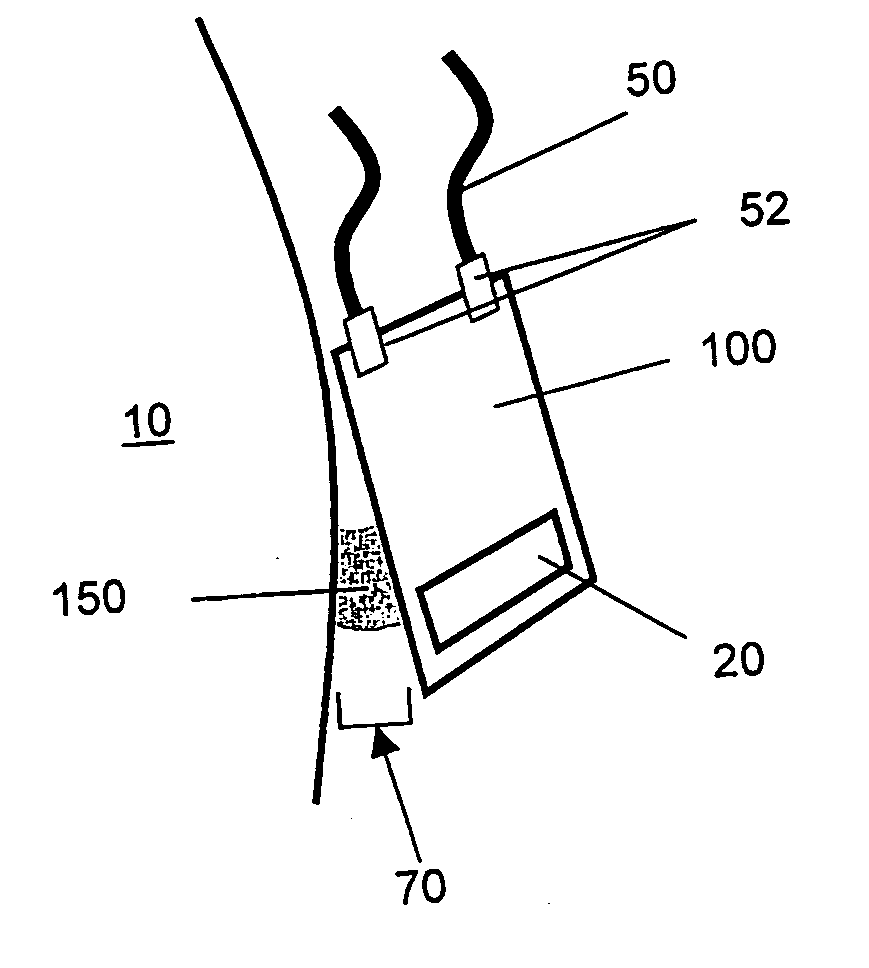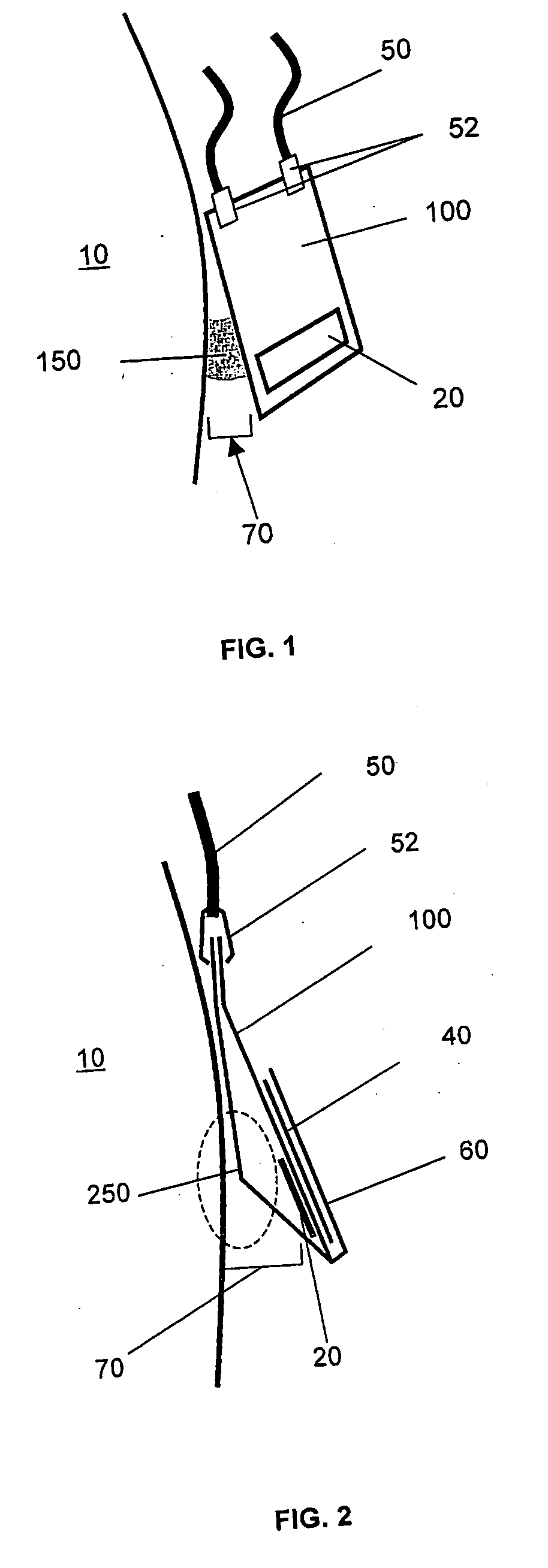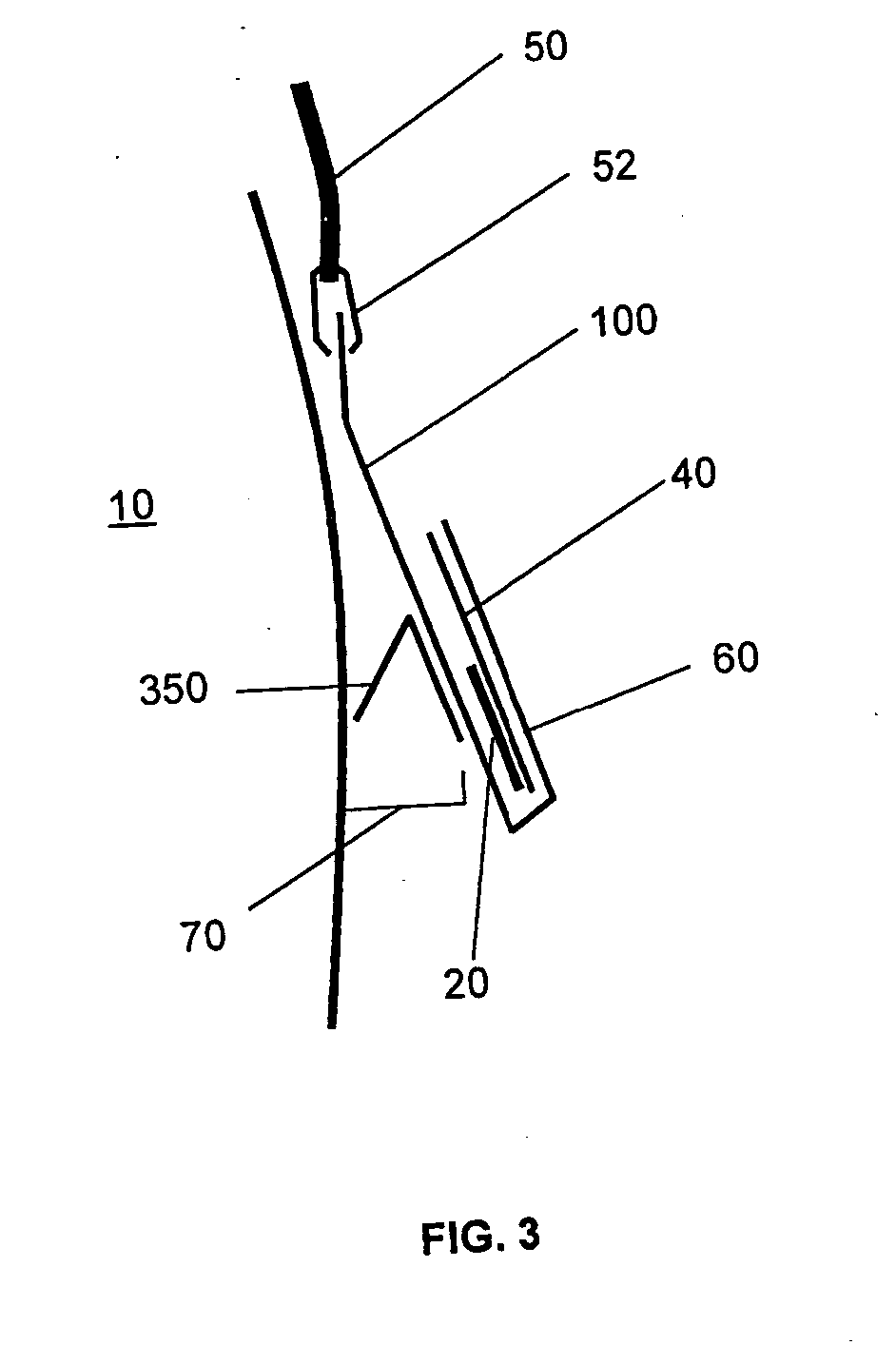Identification badges with RFID tags and methods thereof
a technology of identification badges and rfid tags, applied in the field of radio frequency identification devices, can solve the problems of rfid readers not being able to communicate with a tag located very close to the body of a human, compromising the reliability of rfid reading,
- Summary
- Abstract
- Description
- Claims
- Application Information
AI Technical Summary
Benefits of technology
Problems solved by technology
Method used
Image
Examples
third embodiment
[0022] Referring to FIG. 3, there is shown another embodiment of the badge holder 100 of the present invention. In this third embodiment, the spacer 350 is a bent layer of material connected to and which extends out from the badge holder 100 to provide the desired distance 70. The material which composes the spacer 350 should preferably be resilient in order for the bent layer 350 to keep its shape and thus, the desired distance 70 between the RFID tag 20 and the body 10. It is understood that other types of shapes and configurations and numbers of layers and elements can be used for the spacer 350.
[0023] Referring to FIGS. 4 to 6, there is shown yet another embodiment of the badge holder 100 of the present invention. In this fourth embodiment, the badge holder 100 generally comprises at least two layers 410 and 415 of material. The front layer 410, partially shown in FIG. 6, is adapted to receive a badge 40, generally but not exclusively by means of a pocket (similar to pocket 60)....
fourth embodiment
[0024] The skilled addressee will understand that the fourth embodiment shall also generally be equipped with a lanyard 50 and clips 52 or other similar securing device.
[0025] In all these embodiments, the RFID tag 20 can be either directly connected to the badge holder 100, or connected to the badge 40. In FIG. 2, the tag 20 is directly connected to the badge holder 100. Alternatively, in FIG. 3, the tag 20 is connected directly on the badge 40 which is located in the badge holder pocket 60. Whether it is attached to the badge holder 100 or the badge 40, the RFID tag 20 can be affixed in a variety of manners, such as with glue.
[0026] Additionally, the badge holders 100 can be produced in large quantities with the RFID tag 20 included, such as in FIG. 2. If the RFID tag 20 is attached to the name badge 40, the name badge 40 with the RFID tag 20 can be sent to the user by mail in a regular envelope or can be delivered in other manners.
[0027] The badge holder is secured around the n...
PUM
 Login to View More
Login to View More Abstract
Description
Claims
Application Information
 Login to View More
Login to View More - R&D
- Intellectual Property
- Life Sciences
- Materials
- Tech Scout
- Unparalleled Data Quality
- Higher Quality Content
- 60% Fewer Hallucinations
Browse by: Latest US Patents, China's latest patents, Technical Efficacy Thesaurus, Application Domain, Technology Topic, Popular Technical Reports.
© 2025 PatSnap. All rights reserved.Legal|Privacy policy|Modern Slavery Act Transparency Statement|Sitemap|About US| Contact US: help@patsnap.com



